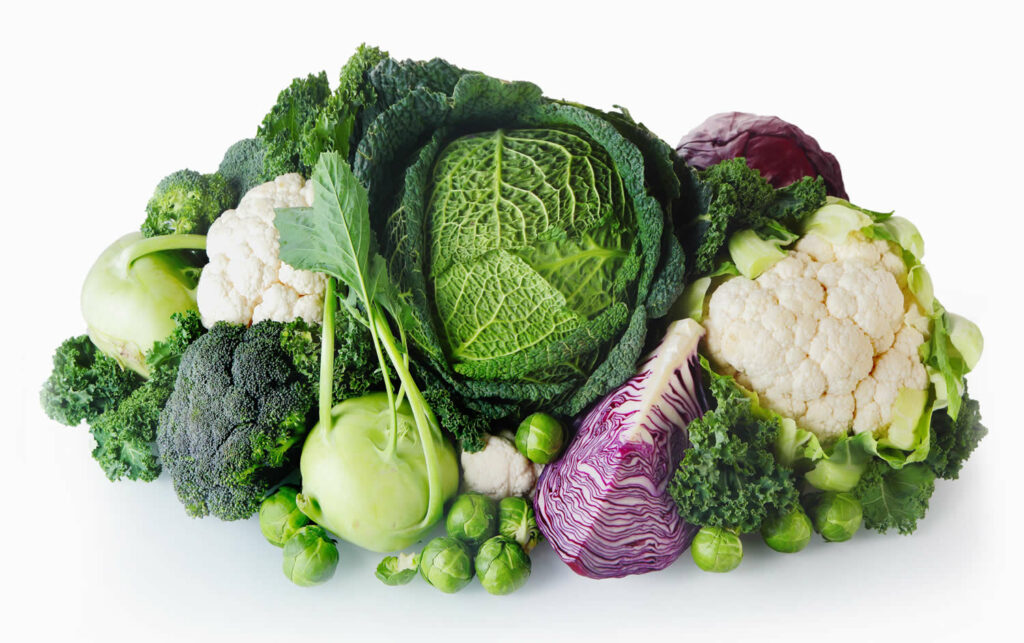ruciferous vegetables are a group of plants that belong to the Brassicaceae family. They are named after the Latin word “crux,” meaning cross, because their flowers have four petals that form a cross-like shape. These vegetables are not only delicious but also offer numerous health benefits. In this comprehensive guide, we will explore the various health benefits of cruciferous vegetables and provide some tasty recipes to incorporate them into your diet.
Nutritional Value:
Cruciferous vegetables are packed with essential vitamins, minerals, and fiber. They are low in calories and high in nutrients, making them an excellent addition to a healthy diet. Some common cruciferous vegetables include broccoli, cauliflower, Brussels sprouts, kale, cabbage, and bok choy.
Cancer Prevention:
One of the most notable health benefits of cruciferous vegetables is their potential to reduce the risk of certain types of cancer. They contain compounds called glucosinolates, which are converted into cancer-fighting compounds called isothiocyanates in the body. These compounds help neutralize carcinogens, inhibit tumor growth, and promote the elimination of potential cancer cells.
Heart Health:
Including cruciferous vegetables in your diet can contribute to a healthy heart. They are a good source of dietary fiber, which can help lower cholesterol levels and reduce the risk of heart disease. Additionally, cruciferous vegetables contain antioxidants, such as vitamin C and beta-carotene, which help protect against oxidative stress and inflammation in the cardiovascular system.
Digestive Health:
The high fiber content in cruciferous vegetables promotes healthy digestion and prevents constipation. Fiber adds bulk to the stool, making it easier to pass through the digestive tract. It also nourishes beneficial gut bacteria, which are essential for proper digestion and nutrient absorption.
Anti-inflammatory Properties:
Chronic inflammation is linked to various health conditions, including heart disease, diabetes, and certain types of cancer. Cruciferous vegetables contain compounds that possess anti-inflammatory properties, such as sulforaphane and indole-3-carbinol. These compounds help reduce inflammation in the body and may contribute to the prevention of chronic diseases.
Now, let’s move on to some delicious and nutritious recipes to incorporate cruciferous vegetables into your meals:
Recipe 1: Roasted Broccoli and Cauliflower
Ingredients:
- 1 head of broccoli, florets separated
- 1 head of cauliflower, florets separated
- 2 tablespoons olive oil
- Salt and pepper to taste
Instructions:
- Preheat the oven to 425°F (220°C).
- In a large bowl, toss the broccoli and cauliflower florets with olive oil, salt, and pepper until well coated.
- Spread the florets in a single layer on a baking sheet.
- Roast in the preheated oven for 20-25 minutes, or until the edges are crispy and golden brown.
- Remove from the oven and serve as a side dish or as a topping for salads and grain bowls.
- Recipe 2: Kale and Brussels Sprouts Salad
- Ingredients:
- 4 cups kale leaves, stems removed and chopped
- 2 cups Brussels sprouts, thinly sliced
- 1/4 cup dried cranberries
- 1/4 cup sliced almonds
- 2 tablespoons lemon juice
- 2 tablespoons olive oil
- Salt and pepper to taste
Instructions:
- In a large bowl, combine the kale, Brussels sprouts, dried cranberries, and sliced almonds.
- In a small bowl, whisk together the lemon juice, olive oil, salt, and pepper.
- Drizzle the dressing over the salad and toss until well combined.
- Allow the salad to sit for 10-15 minutes to let the flavors meld together.
- Serve as a refreshing and nutritious salad for lunch or as a side dish for dinner.
- Recipe 3: Cabbage Stir-Fry
Ingredients:
- 4 cups shredded cabbage
- 1 cup sliced bell peppers (any color)
- 1 cup sliced carrots
- 1 cup snap peas
- 2 cloves garlic, minced
- 2 tablespoons soy sauce
- 1 tablespoon sesame oil
- 1 tablespoon rice vinegar
- 1 tablespoon honey (optional)
- 2 tablespoons chopped green onions (for garnish)
Instructions:
- Heat the sesame oil in a large skillet or wok over medium heat.
- Add the garlic and stir-fry for about 1 minute until fragrant.
- Add the cabbage, bell peppers, carrots, and snap peas to the skillet and stir-fry for 5-7 minutes until the vegetables are crisp-tender.
- In a small bowl, whisk together the soy sauce, rice vinegar, and honey (if using).
- Pour the sauce over the vegetables and toss to coat evenly.
- Cook for an additional 1-2 minutes until the sauce has thickened slightly.
- Remove from heat and garnish with chopped green onions.
- Serve the stir-fry as a main dish with brown rice or quinoa, or as a side dish alongside grilled chicken or tofu.
Incorporating cruciferous vegetables into your diet not only adds vibrant flavors and textures to your meals but also provides a wide range of health benefits. Experiment with these recipes and explore other creative ways to enjoy these nutrient-packed veggies. Whether you roast, steam, stir-fry, or blend them into smoothies, make sure to make cruciferous vegetables a regular part of your balanced eating plan.

